Watermelon Feta Cheese Recipe Perfected: The Complete Guide to This Sweet-Salty Culinary Sensation

The combination of sweet, juicy watermelon and salty, creamy feta cheese creates a surprisingly harmonious culinary experience. This seemingly unconventional pairing has gained considerable popularity for its refreshing nature and delightful contrast in both flavor and texture.
The versatility of the watermelon feta cheese recipe allows it to be enjoyed in numerous ways – as a light and hydrating salad, a simple yet elegant appetizer, or even as a component of a more substantial light meal, making it particularly appealing during warmer seasons.
Contents
The Foundation: Classic Watermelon Feta Combinations
At its core, the watermelon feta cheese recipe can be remarkably simple, involving just two key ingredients: ripe watermelon and good-quality feta cheese. The success of this minimalist approach hinges on the quality of these primary components.
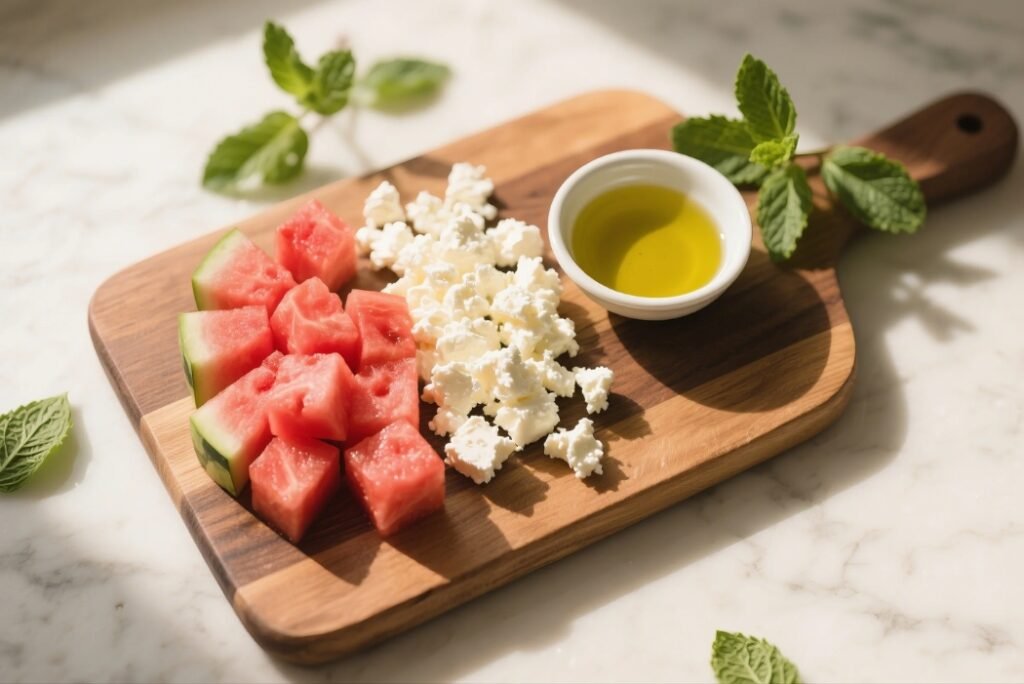
The watermelon should be at its peak ripeness, offering natural sweetness and juicy texture. Similarly, the feta cheese should be of good quality, with many preferring sheep’s milk feta for its characteristic creaminess and balanced salty flavor.
Building upon this basic foundation, many simple versions of the watermelon feta cheese recipe incorporate a few core additions to enhance the flavor profile. Fresh mint is a particularly common ingredient, lending a refreshing and slightly sweet note that complements both the watermelon and the feta.
A simple dressing of olive oil is also frequently used to lightly coat the ingredients and meld the flavors together. To introduce a touch of acidity that further brightens the flavors, many versions include a drizzle of lime juice or vinegar.
Even with minimal additions, the resulting flavor profile can be quite distinct, underscoring the adaptable nature of the recipe and encouraging individuals to adjust ingredients to their personal taste preferences.
Elevating the Flavor: Popular Variations and Additions
Beyond the basic preparations, the watermelon feta cheese recipe lends itself well to a variety of enhancements through additional ingredients.
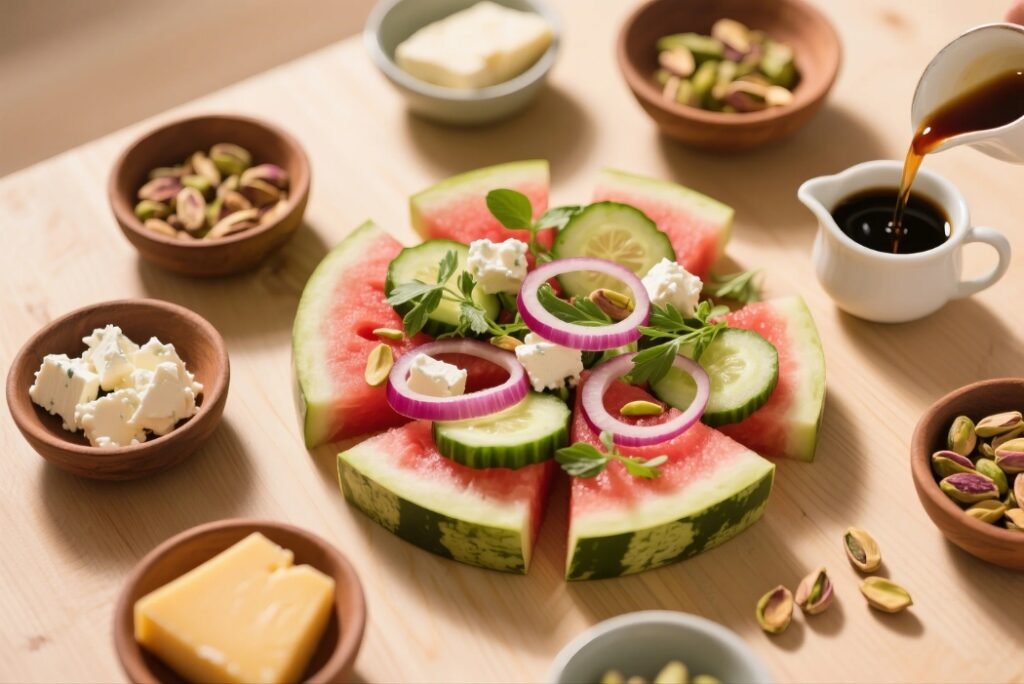
Fresh herbs play a significant role in adding aromatic complexity and freshness. Mint provides a cooling counterpoint, while basil adds sweet and slightly peppery notes. Other herbs, such as cilantro or parsley, offer different flavor profiles that can dramatically influence the overall aromatic character.
Vegetable additions contribute both texture and nuanced flavors. Thinly sliced red onion provides a sharp, pungent contrast to the sweetness of the watermelon. Cucumber adds a refreshing crunch and hydrating element. For those who enjoy a peppery bite, arugula is a common leafy green addition.
The dressing used can significantly alter the character of the watermelon feta salad:
- Balsamic glaze offers a sweet and tangy finish
- Balsamic vinegar provides a more pronounced tartness
- Honey-lime vinaigrette offers a balance of sweetness and acidity
- Red wine vinaigrette features olive oil and red wine vinegar
- Champagne vinegar or lemon juice provides brightness
While feta cheese is central to the classic watermelon feta cheese recipe, creative variations often explore other cheeses. Goat cheese provides a creamier texture and tangier flavor profile. Other possibilities include fresh mozzarella, ricotta salata, queso fresco, blue cheese, halloumi, cotija, and even paneer.
For added texture and crunch, many recipes incorporate nuts like toasted pistachios, almonds, pecans, or walnuts. Seeds like sunflower seeds or poppy seeds can also contribute a subtle crunch and nutty flavor.
Finally, the addition of other fruits can create a more complex flavor profile. Blueberries, strawberries, peaches, blackberries, oranges, and even tomatoes can add different levels of sweetness, tartness, or juiciness to the salad.
Understanding the Nutritional Value
The nutritional profile of the watermelon feta cheese recipe varies depending on specific ingredients and quantities, but it generally offers several health benefits.

Watermelon is a good source of vitamins A and C, contains minerals such as potassium, and is rich in lycopene, an antioxidant. Feta provides calcium and protein, while the olive oil contributes healthy fats.
Given its high water content, watermelon feta salad is a refreshing and hydrating option, particularly suitable for hot weather. However, the sodium content can be significant depending on the type and amount of feta cheese used, which is an important consideration for individuals monitoring their sodium intake.
Serving Suggestions: From Appetizer to Light Meal

The inherent freshness of the watermelon feta cheese recipe makes it an ideal side dish for various outdoor gatherings, such as barbecues, picnics, and summer parties. Its refreshing flavors pair well with both richer grilled dishes like steak and ribs, as well as lighter options such as lamb chops, chicken skewers, and salmon.
As a delightful appetizer, elegant skewers featuring cubes of watermelon and feta, often drizzled with balsamic glaze, are a popular choice for parties. Creative presentations, such as a patriotic watermelon and feta flag, can add a festive touch to themed events.
To transform the salad into a more substantial light meal, adding protein sources like grilled prawns or shredded chicken works well. Serving it on a bed of greens or incorporating grains such as quinoa or orzo can also enhance its satiety.
Mastering the Recipe: Tips and Tricks for Success
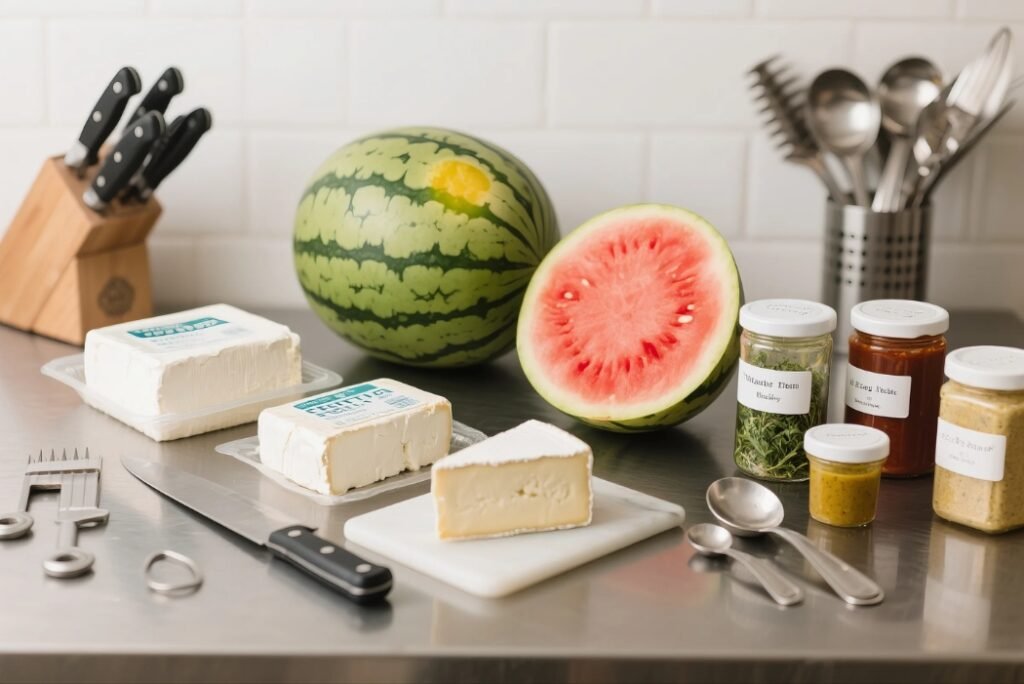
Selecting the right ingredients is crucial for a successful watermelon feta cheese recipe. When choosing a watermelon, look for one that feels heavy for its size, which often indicates a juicier and more flavorful melon. A creamy yellow spot on the underside suggests that the watermelon ripened on the vine and is likely to be sweeter.
For the feta cheese, opt for sheep’s milk feta for superior flavor and creamy texture. Greek or Bulgarian feta are often considered high-quality choices. Buying feta stored in brine helps maintain its hydration and flavor.
Proper preparation techniques can enhance the final dish. Chill the watermelon before assembling the salad for extra refreshment. Cut the watermelon into uniform cubes or use a melon baller for consistent size and more appealing presentation. Drain any excess liquid from the cut watermelon to prevent the salad from becoming too watery.

For the best preparation and serving experience of your watermelon feta cheese recipe, consider exploring Drapela Works‘ handcrafted wooden products. Their personalized cutting boards with juice grooves are perfect for cutting juicy watermelon, as they catch excess liquid and prevent messy countertops.
When serving your watermelon feta creation, their elegant charcuterie boards or versatile paddle boards made from American-sourced hardwoods like maple and walnut provide a stunning presentation that elevates the visual appeal of your dish. Each board is handcrafted in their Texas workshop with meticulous attention to detail and finished with food-safe mineral oil and beeswax.
Visit Drapela Works’ website and use these special Drapela Works coupons for the best prices on these quality kitchen tools that combine functionality with artisanal craftsmanship. Their commitment to quality and personalization options makes these boards not just kitchen tools, but potential heirlooms for your culinary adventures.
A Taste of History: Exploring the Origins
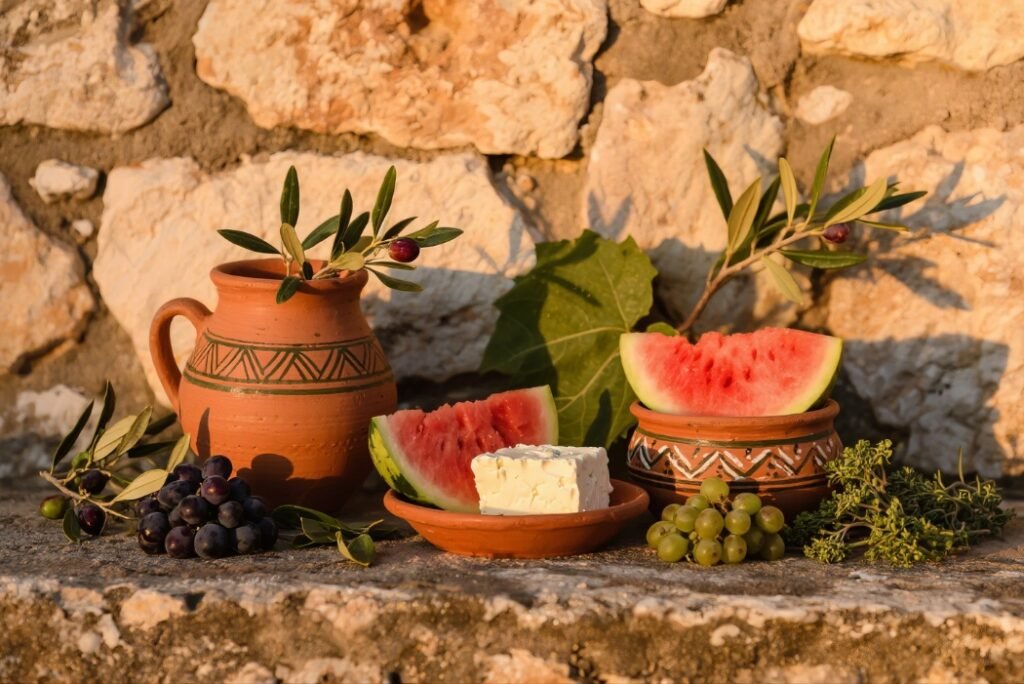
The combination of watermelon and feta cheese has historical roots in several culinary traditions across the Mediterranean and Middle East. In Greek cuisine, watermelon and feta have long been paired, often served as a simple and refreshing way to conclude a meal during hot summer months.
Persian cuisine features a long-standing tradition of pairing watermelon with salty cheese, often enjoyed for breakfast alongside bread, sometimes with the addition of herbs and nuts. In Turkish cuisine, this pairing is a popular summer snack, served with wedges of watermelon accompanied by slices of feta.
The enduring appeal of this combination stems from the complementary nature of sweet watermelon and salty feta, creating a balanced and satisfying taste experience that resonates across different cultures. The modern watermelon feta cheese recipe evolved from these simple combinations, with additions enhancing its flavor, texture, and visual appeal.
Helpful Tips and Adaptations
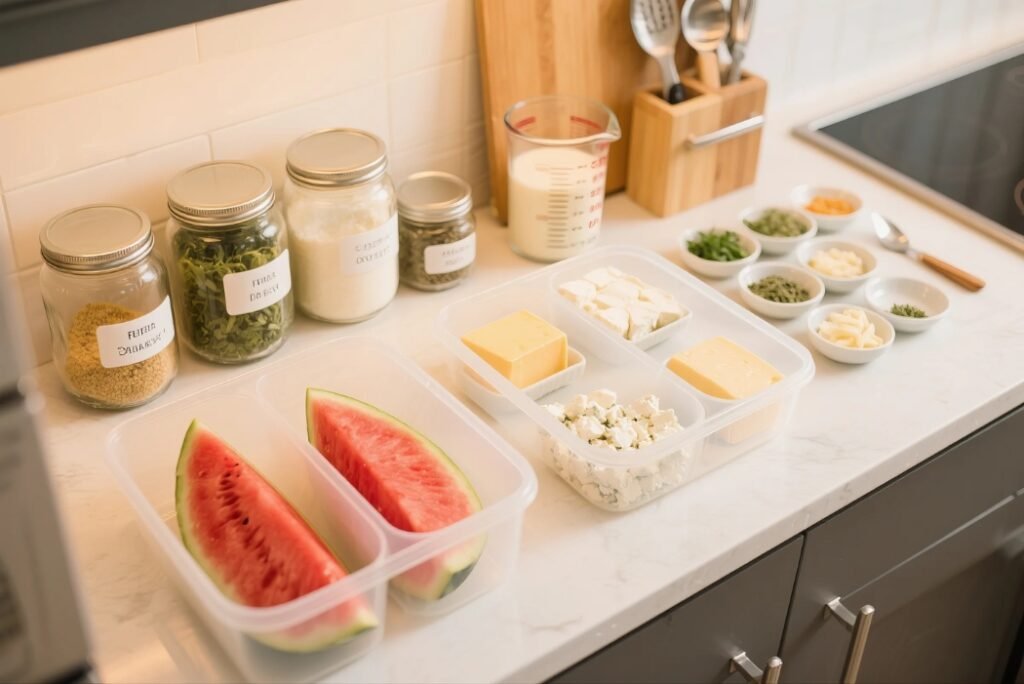
To maintain the freshness of leftover watermelon feta salad, store it in an airtight container in the refrigerator. For optimal results, consider storing the components separately and combining them just before serving.
Several ingredients can be substituted in the recipe. For those seeking alternatives to feta, goat cheese offers a creamier option. If mint isn’t preferred, basil, cilantro, or parsley can provide different yet complementary aromatic notes. For vegans, tofu-based vegan feta is a suitable alternative.
The watermelon feta cheese recipe is naturally gluten-free and can be adapted for various dietary restrictions. For a dairy-free version, the feta cheese can be substituted with a vegan alternative. Those on a low-sodium diet can use less feta cheese or rinse it to remove some of the brine.
With its refreshing taste, nutritional benefits, and endless versatility, the watermelon feta combination offers a delightful culinary experience that appeals to a wide range of palates. Whether enjoyed as a simple snack or elaborated into a gourmet salad, this unexpected pairing continues to charm food enthusiasts around the world.





